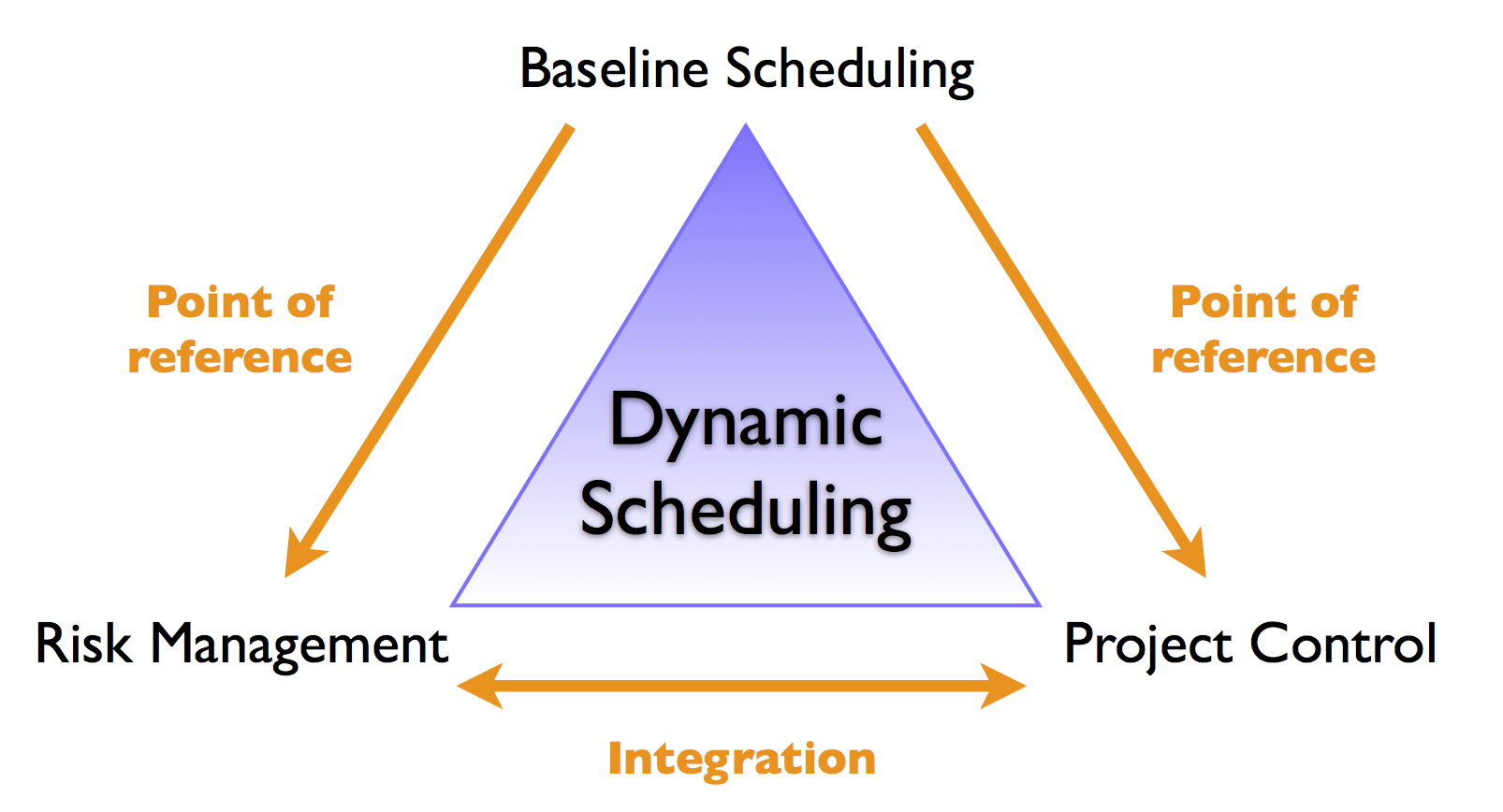Project control (often referred to as project monitoring or project tracking) is the process performed to observe project execution in order to identify potential problems and/or opportunities in a timely manner such that corrective actions can be taken when necessary. The key benefit is that the current project status is observed on a regular basis, which enables the calculation of the project performance variance that is equal to the gap between actual performance and the baseline schedule. Since the current project performance is measured by variances from the project management plan, the baseline schedule plays a central and unambiguous role during the project tracking process.
The success of project monitoring and control relies on the quality of the baseline schedule data. Ideally, a project control approach should use all relevant information that project managers have obtained during the planning phase, and should rely on data from the baseline scheduling step (see “Dynamic scheduling: An introduction to baseline scheduling”) as well as information from the schedule risk analysis phase (see “Dynamic scheduling: An introduction to risk management”).
Figure 1. Dynamic scheduling: the baseline schedule, risk management and project control triangle?
The project control topics of PMKC have been classified in the following categories:
-
Earned Value Management
-
Schedule control
For an overview of the three dynamic scheduling dimensions, see figure 1 or “
Dynamic scheduling: Welcome to PM Knowledge Center”. The different categories are briefly explained below. Further details on these topics can be found in the summary articles of PMKC.
Earned Value Management
Earned Value Management (EVM) is a methodology used to measure and communicate the real physical progress of a project and to integrate the three critical elements of project management (scope, time and cost management). It takes into account the work completed, the time taken and the costs incurred to complete the project and it helps to evaluate and control project risks by measuring project progress in monetary terms. The methodology has been used since the 1960s, when the USA department of defense proposed a standard method to measure a project’s performance. The system relies on a set of often straightforward metrics to measure and evaluate the general health of a project. These metrics serve as early warning signals to timely detect project problems or to exploit project opportunities. The purpose of an EVM system is to provide answers to project managers on questions such as:
-
What is the difference between budgeted and actual costs?
-
What is the current project status? Ahead of schedule or schedule delay?
-
Given the current project performance, what is the expected remaining time and cost of the project?
A research book “Measuring Time: Improving project performance using Earned Value Management” has been awarded the Research Collaboration Fund by the Belgian chapter of the Project Management Institute (PMI-Belgium) and the International Project Management Association (IPMA) (see figure 2).
?

Figure 2. Measuring Time: a research book on project control
Schedule control
Controlling the performance of a project in progress is key to the success or failure of a project. Metrics provided by EVM systems measure the current progress and forecast the future expected project behavior such that the project manager is able to timely detect project problems and take corrective actions to bring the project back on track. In order to be able to take high quality corrective actions, the project manager should carefully control the project baseline schedule and set action thresholds that act as triggers to take these actions.




